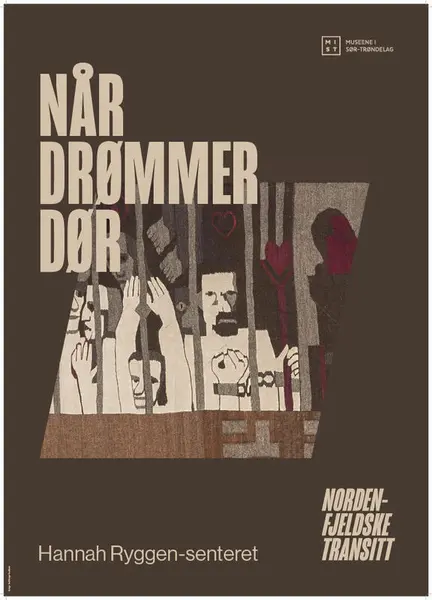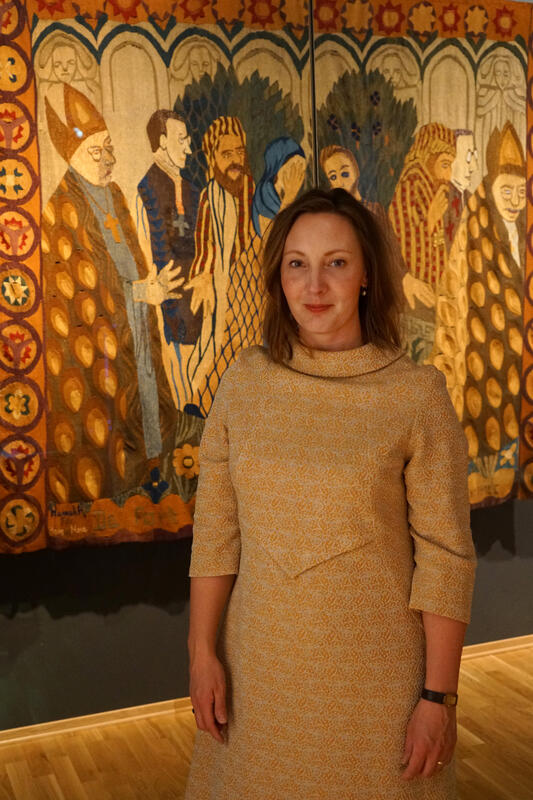- 1/1
In 1936, Hannah Ryggen gave the unsettling title Death of Dreams to a work woven as a warning to the world. She was reacting to the Nazis’ ever-tighter stranglehold on human dignity. In the tapestry, we see Adolf Hitler, Hermann Göring and Joseph Goebbels portrayed in the centre; to the left is the handcuffed Carl von Ossietzky (among others), and to the right, Albert Einstein is about to flee. The tapestry’s lower register, an apparently abstract field woven in grey and brown, represents a brick wall that – almost suddenly – emerges for the viewer as a pattern of swastikas.
The preceding year, in 1935, she wove the tapestry Ethiopia as an expression of outrage over Italy’s invasion of the North-African empire. Together with several anonymous war victims, she has depicted Haile Selassie, the Ethiopian emperor, who spoke the famous words ‘It is us today. It will be you tomorrow’. Italy’s prime minister Benito Mussolini is pictured as a decapitated head on a spear. This was what Ryggen thought he deserved for his wartime atrocities.
Hannah Ryggen’s courage never faltered, even though the horrors she had warned of came very close to home. Fragments of various events are depicted in the large weaving 6 October 1942. On this day the Nazis declared a state of martial law in Trøndelag; the following morning, several persons were executed. One was Henry Gleditsch, shown in Ryggen’s work as falling dead in the arms of his wife. Hitler himself floats above them, pistols in hand. A tortured Serbian prisoner of war is seen in the background, naked and tied to a post. In the tapestry’s middle section is Winston Churchill, and to the right, the Ryggen family in a small boat floating on waves. They dreamed of fleeing to England.
Today, a steadily increasing number of people are forced to flee their home. Ryggen reminds us that not long ago, Norwegians too needed to flee for their life. New countries – thus also the lives of individuals, whom Ryggen always emphasised – are invaded. The Ukranian-born author Svetlana Alexievich, in her prizewinning book The Unwomanly Face of War (1985), has interviewed women who fought on the side of the Soviet Union during the Second World War. Quotes from this book are included in the exhibition in order to expand on Ryggen’s depictions of ordinary people’s perspectives on war and its realities.
In hope that new dreams will be born and old dreams will be revived.

